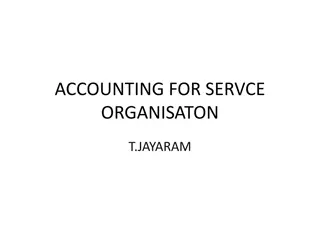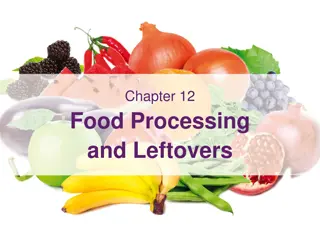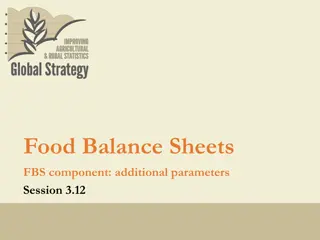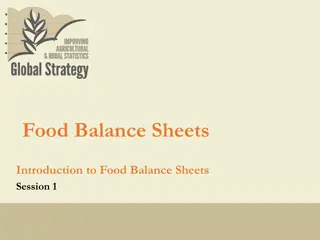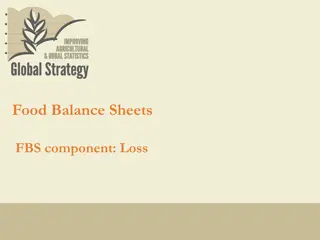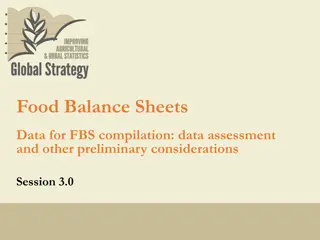Understanding Food Processing Data for Balance Sheets
Food processing data is crucial for balance sheets, necessitating the consideration of official and alternative sources, as well as approaches for imputation and estimation. Industrial output surveys, agricultural production surveys, and data from commodity organizations play key roles in determining food processing quantities. This information aids in calculating derived commodity production, essential for accurate balance sheets.
Download Presentation

Please find below an Image/Link to download the presentation.
The content on the website is provided AS IS for your information and personal use only. It may not be sold, licensed, or shared on other websites without obtaining consent from the author. Download presentation by click this link. If you encounter any issues during the download, it is possible that the publisher has removed the file from their server.
E N D
Presentation Transcript
Food Balance Sheets FBS component: Food Processing
Learning Objectives At the end of this session, the audience will know: a) Different data sources for food processing b) Recommended approach for Imputation and estimation of food processing 2
Outline 1. Data sources 2. Imputation and estimation 3
Introduction Food processing refers to quantities of a commodity that enter some manufacturing process for the production of a derived food product. Food processing quantities are linked to the production of derived commodities through extraction rates. So, it can either be directly measured, or can be calculated by applying the extraction rate to quantities of production of derived commodities. 4
1. Data sources Official data sources Two official data sources on food processing should be noted. agricultural production surveys o production surveys may include questions on whether or not the product is destined for the fresh market or else was sold to be further processed. o Quantities reported as destined for further processing are then, by definition, food processing quantities. 5
1. Data sources Official data sources Two official data sources on food processing should be noted. Industrial output surveys o Compilers need only divide industrial output by the extraction rate in order to calculate the primary commodity equivalent used as input for that particular transformation process. o These official data sources are only useful if a majority of processing is covered by industrial output surveys. o In instances where home processing is common, this data should be combined with an estimate of total production of the derived product at the household level. 6
1. Data sources Alternative data sources Data from commodity organizations, manufacturer s associations, or even specific food processing facilities may also be useful in the calculation of food processing quantities. FBS compilers should make some effort to take into account the representativeness of said data Example: if members of a hypothetical Orange Juice Producer s Association are thought to cover 90 percent of all production, then orange juice production data from that association can be utilized and scaled up to arrive at an estimate of the country s total orange juice production. 7
2. Imputation and estimation When derived commodity production is available Imputation of food processing can be fairly simple in cases where data on production of derived goods exists. 2.18 ???????? ?? ??????? ??????? ?????????? ???? ??????? ????????? ?????????? = It should be emphasized here that food processing quantities must cover the inputs of all derived products. The equation can be applied multiple times, and the values of the primary commodity equivalents can be added together to derive the overall quantity of the primary good that entered all transformation processes. 8
2. Imputation and estimation When derived commodity production is not available If no data on derived commodity production is available, then it is recommended that total quantities destined to food processing be estimated in a panel of experts. This panel should also determine the share of the food processing quantity that is destined to different transformation processes. In certain particular cases, food processing can also be used as a balancing item at the SUA level. Considering the olive example, all olives are processed before they are consumed. As such, after accounting for net trade, loss, and any other utilization, all remaining olives can be assumed to be destined for food processing. 9
Reference 1. 3rdchapter of the Guidelines: Data for FBS compilation: considerations, sources and imputation 3.5.5 Food Processing 10 10













